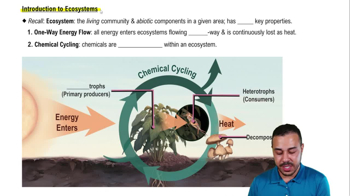Multiple Choice
In an ecosystem, nutrients __________ and energy __________.
1303
views
 Verified step by step guidance
Verified step by step guidance Verified video answer for a similar problem:
Verified video answer for a similar problem:



 9:50m
9:50mMaster Life's Organizational Hierarchy with a bite sized video explanation from Jason
Start learning